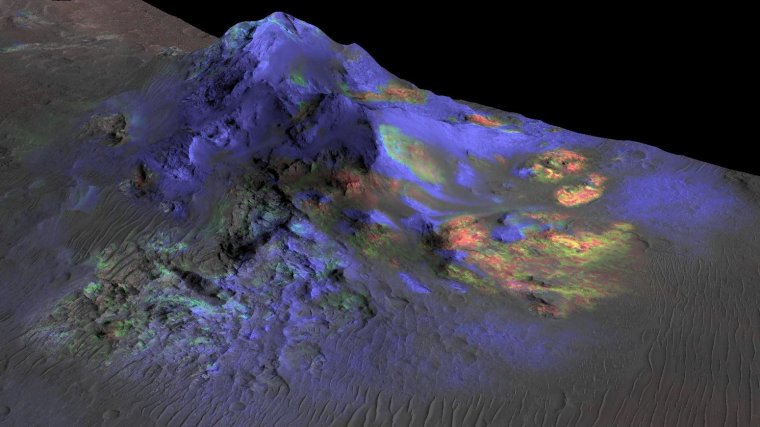| News / Space News |
NASA Spacecraft Detects Impact Glass on Surface of Mars
NASA | JUNE 11, 2015
NASA's Mars Reconnaissance Orbiter (MRO) has detected deposits of glass within impact craters on Mars. Though formed in the searing heat of a violent impact, such deposits might provide a delicate window into the possibility of past life on the Red Planet.

Deposits of impact glass preserved in Alga Crater from Mars. ![]()
Research has shown evidence about past life has been preserved in impact glass here on Earth. A 2014 study found organic molecules and plant matter entombed in glass formed by an impact that occurred millions of years ago in Argentina. Similar processes might preserve signs of life on Mars, if they were present at the time of an impact.
Large glass deposits are present in several ancient, yet well-preserved, craters on Mars. The technique pinpointed deposits in several Martian crater central peaks, the craggy mounds that often form in the center of a crater during a large impact. The fact the deposits were found on central peaks is a good indicator that they have an impact origin.
Knowing that impact glass can preserve ancient signs of life -- and now knowing that such deposits exist on the Martian surface today -- opens up a potential new strategy in the search for ancient Martian life.
YOU MAY ALSO LIKE

